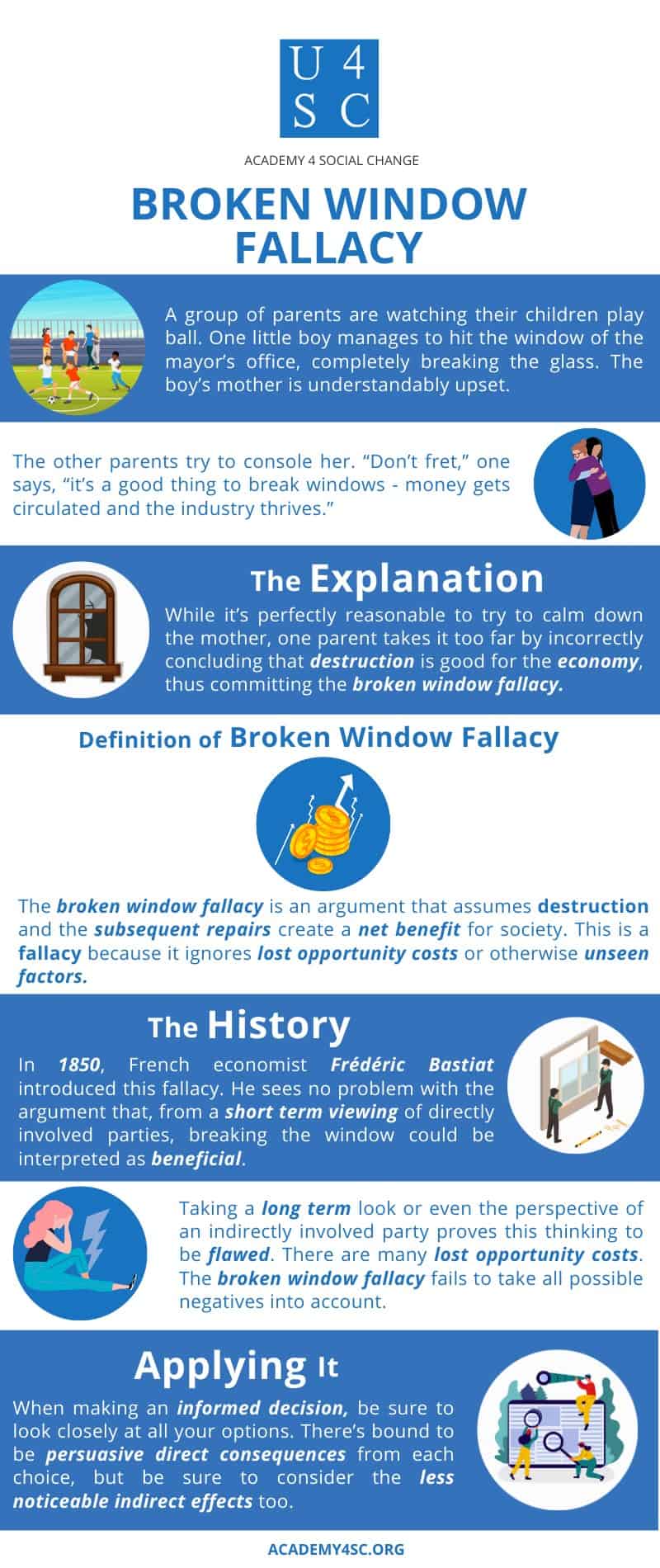Introduction
A group of parents are watching their children play ball. One little boy however manages to hit the window of the mayor’s office, completely breaking the glass. The boy’s mother is understandably upset. “Just perfect,” she remarks, “now I’ll have to get that window fixed.” The other parents try to console her. “Don’t fret,” one says, “what would happen to the glaziers if windows were never broken?” “Yeah,” another one pipes up, “it’s a good thing to break windows - money gets circulated and the industry thrives.”
Here’s Why
While it’s perfectly reasonable to try to calm down the mother, one parent takes it too far by incorrectly concluding that destruction is good for the economy, thus committing the broken window fallacy.
Broken Window Fallacy
The broken window fallacy is an argument that assumes destruction and the subsequent repairs create a net benefit for society. This is a fallacy because it ignores lost opportunity costs or otherwise unseen factors because they are not readily obvious.
The History
In 1850, French economist Frédéric Bastiat introduced this fallacy using an example similar to our earlier one. Bastiat sees no problem with the argument that, from a short term viewing of directly involved parties, breaking the window could be interpreted as beneficial. After all, the glazier does need work, and thus benefits from the careless child. However, the fallacy lies in the extrapolation that destruction is beneficial for the economy.
Taking a long term look or even the perspective of an indirectly involved party proves this thinking to be flawed. There are many lost opportunity costs. The parent of the boy, now having to pay for the window repair, will lose some of her disposable income. After paying for the window, she might decide she can no longer afford a new pair of loafers and forgoes buying them. The mother continues to wear her ill-fitting shoes and the local shoe store loses a sale. The broken window fallacy fails to take these possible negatives into account.
Applying It
In Bastiat’s words, the broken window fallacy “is confined to that which is seen; it takes no account of that which is not seen." Thus, its general mistake can be applied to many fields. The broken window fallacy has often been used to defend the idea of countries going to war and even parade the goods of national and global disasters and tragedies.
When making an informed decision, be sure to look closely at all your options. There’s bound to be persuasive direct consequences from each choice, but be sure to consider the less noticeable indirect effects, too.



